
How to Use SIM900A gsm mosule 01: Examples, Pinouts, and Specs
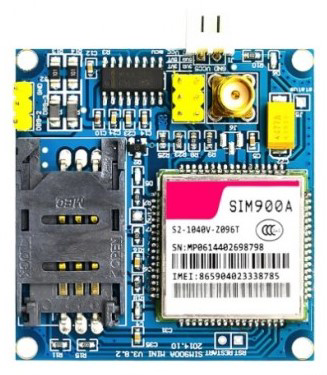
 Design with SIM900A gsm mosule 01 in Cirkit Designer
Design with SIM900A gsm mosule 01 in Cirkit DesignerIntroduction
The SIM900A GSM Module is a compact and reliable GSM/GPRS module designed to enable communication over mobile networks. It allows devices to send and receive SMS, make voice calls, and connect to the internet using GPRS. This module is widely used in IoT applications, remote monitoring systems, and embedded projects requiring wireless communication.
Explore Projects Built with SIM900A gsm mosule 01
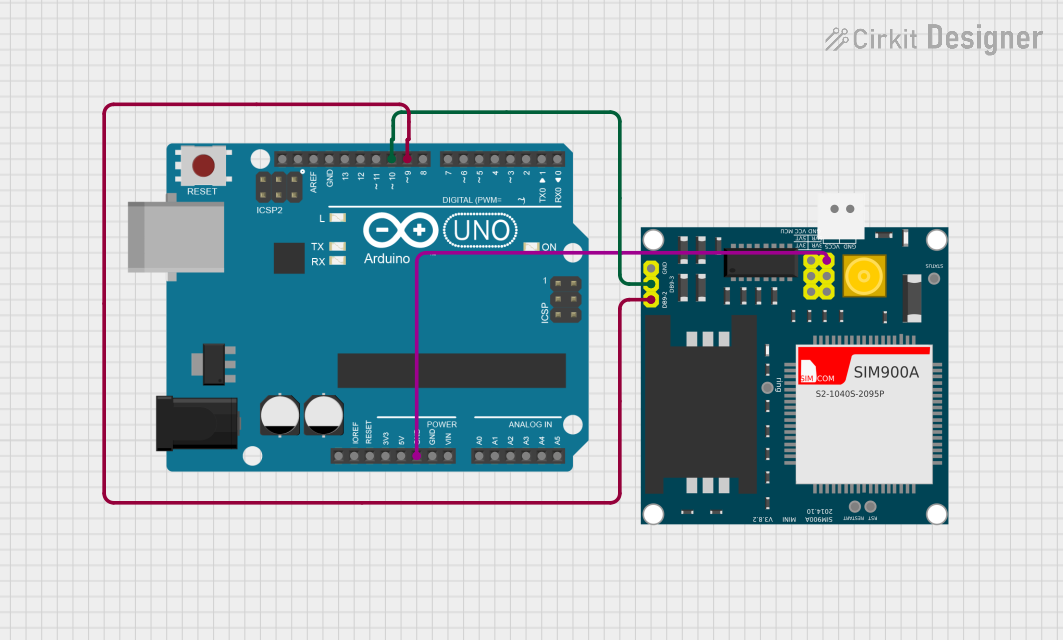
 Open Project in Cirkit Designer
Open Project in Cirkit Designer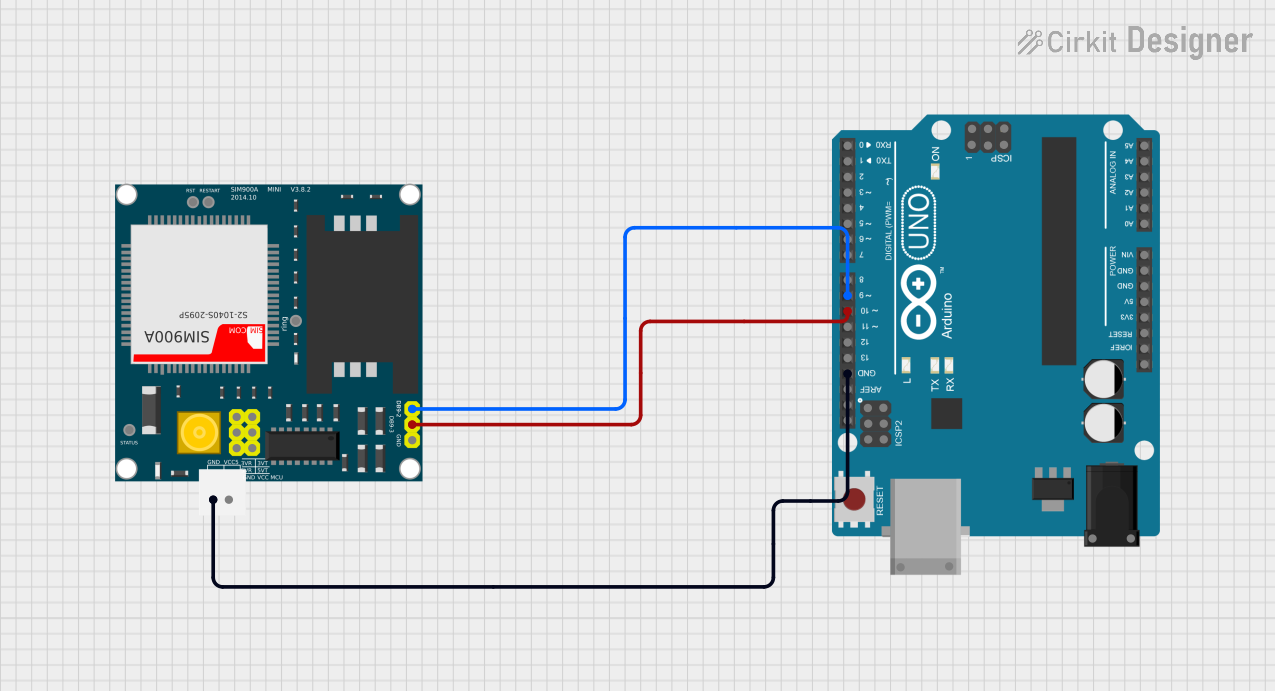
 Open Project in Cirkit Designer
Open Project in Cirkit Designer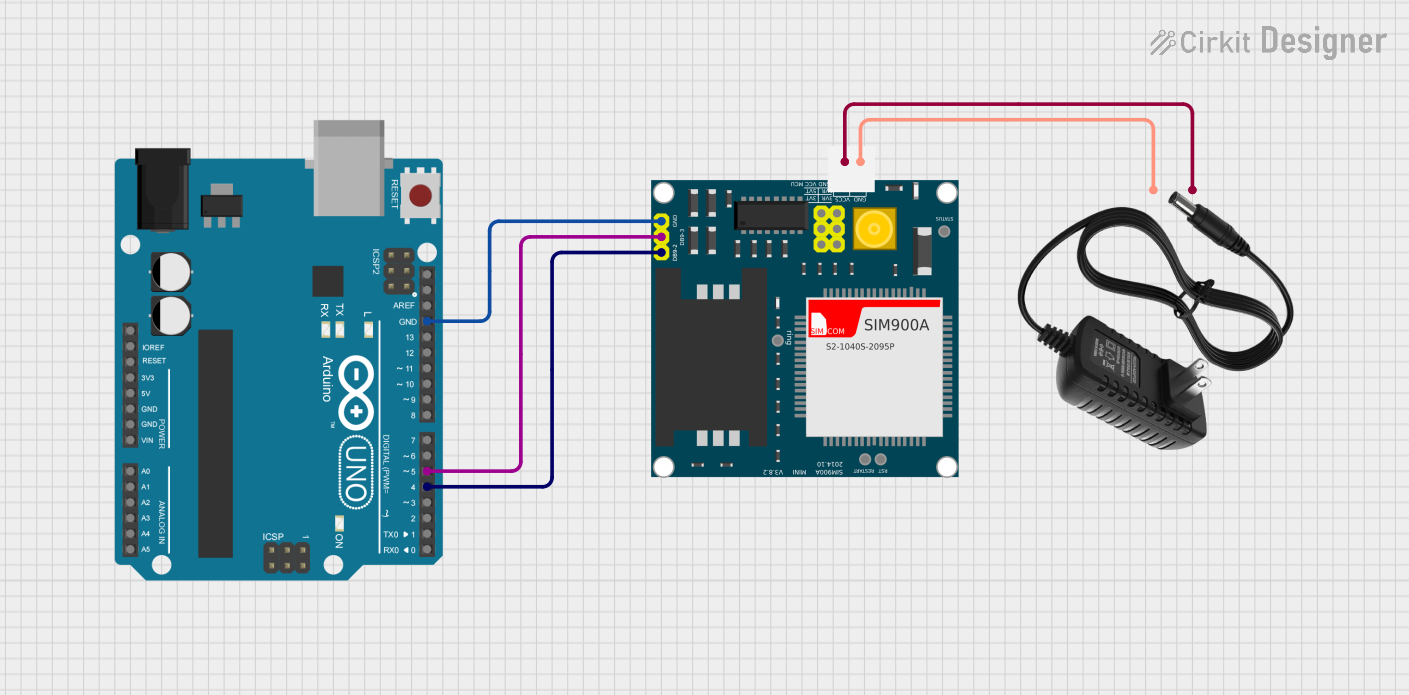
 Open Project in Cirkit Designer
Open Project in Cirkit Designer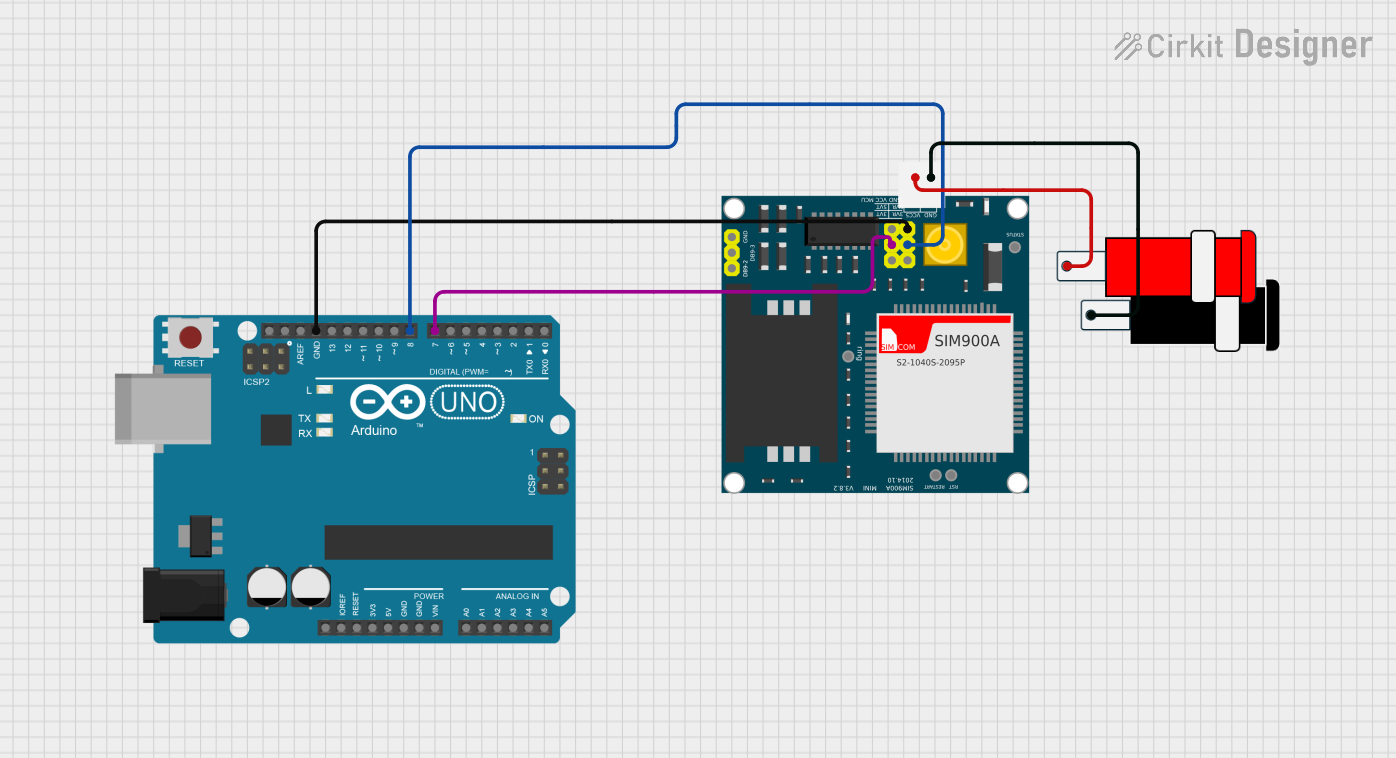
 Open Project in Cirkit Designer
Open Project in Cirkit DesignerExplore Projects Built with SIM900A gsm mosule 01

 Open Project in Cirkit Designer
Open Project in Cirkit Designer
 Open Project in Cirkit Designer
Open Project in Cirkit Designer
 Open Project in Cirkit Designer
Open Project in Cirkit Designer
 Open Project in Cirkit Designer
Open Project in Cirkit DesignerCommon Applications and Use Cases
- IoT devices for remote monitoring and control
- SMS-based alert systems
- Voice call-enabled embedded systems
- GPRS-based internet connectivity for data logging
- Home automation and security systems
- Vehicle tracking and fleet management
Technical Specifications
The SIM900A GSM Module is designed to operate efficiently in a variety of environments. Below are its key technical details:
Key Technical Details
| Parameter | Specification |
|---|---|
| Operating Voltage | 3.2V to 4.8V (Typical: 4.0V) |
| Operating Current | Idle: ~20mA, Max: ~2A during transmission |
| Frequency Bands | Dual-band GSM 900/1800 MHz |
| Communication Interface | UART (3.3V TTL logic) |
| GPRS Connectivity | Class 10 |
| SMS Support | Text and PDU modes |
| Voice Call Support | Full-duplex voice communication |
| Dimensions | 24mm x 24mm x 3mm |
| Operating Temperature | -40°C to +85°C |
Pin Configuration and Descriptions
The SIM900A module has several pins for power, communication, and control. Below is the pinout description:
| Pin Number | Pin Name | Description |
|---|---|---|
| 1 | VCC | Power supply input (3.2V to 4.8V) |
| 2 | GND | Ground connection |
| 3 | TXD | UART Transmit pin (connect to RX of microcontroller) |
| 4 | RXD | UART Receive pin (connect to TX of microcontroller) |
| 5 | DTR | Data Terminal Ready (used for sleep mode control) |
| 6 | RST | Reset pin (active low, used to reset the module) |
| 7 | MIC+ | Microphone positive input for voice calls |
| 8 | MIC- | Microphone negative input for voice calls |
| 9 | SPK+ | Speaker positive output for voice calls |
| 10 | SPK- | Speaker negative output for voice calls |
| 11 | NET | Network status indicator (blinks to indicate GSM network status) |
| 12 | ANT | Antenna connection for GSM signal reception |
Usage Instructions
How to Use the SIM900A GSM Module in a Circuit
- Power Supply: Ensure the module is powered with a stable 4.0V supply. Use a capacitor (e.g., 1000µF) near the power pins to handle current surges during transmission.
- UART Communication: Connect the TXD and RXD pins to the RX and TX pins of your microcontroller, respectively. Use a level shifter if your microcontroller operates at 5V logic.
- Antenna: Attach a GSM antenna to the ANT pin for proper signal reception.
- SIM Card: Insert a valid SIM card into the SIM card slot on the module.
- Initialization: Use AT commands to configure and control the module. For example, send
ATto check communication andAT+CMGF=1to set SMS mode to text.
Important Considerations and Best Practices
- Power Supply: Use a power source capable of supplying at least 2A to handle peak current during GSM transmission.
- Antenna Placement: Place the antenna away from other electronic components to avoid interference.
- UART Baud Rate: The default baud rate is 9600. Configure your microcontroller to match this rate.
- Sleep Mode: Use the DTR pin to enable sleep mode for power-saving applications.
- Error Handling: Always check for responses to AT commands to ensure proper communication.
Example: Connecting to an Arduino UNO
Below is an example of how to send an SMS using the SIM900A module with an Arduino UNO:
#include <SoftwareSerial.h>
// Define RX and TX pins for SoftwareSerial
SoftwareSerial SIM900A(7, 8); // RX = Pin 7, TX = Pin 8
void setup() {
Serial.begin(9600); // Initialize Serial Monitor
SIM900A.begin(9600); // Initialize SIM900A at 9600 baud rate
Serial.println("Initializing SIM900A...");
delay(1000);
// Send AT command to check communication
SIM900A.println("AT");
delay(1000);
while (SIM900A.available()) {
Serial.write(SIM900A.read()); // Print response to Serial Monitor
}
// Set SMS mode to text
SIM900A.println("AT+CMGF=1");
delay(1000);
// Send SMS to a phone number
SIM900A.println("AT+CMGS=\"+1234567890\""); // Replace with recipient's number
delay(1000);
SIM900A.println("Hello, this is a test SMS from SIM900A!"); // SMS content
delay(1000);
SIM900A.write(26); // Send Ctrl+Z to indicate end of message
delay(5000);
Serial.println("SMS sent!");
}
void loop() {
// No actions in loop
}
Troubleshooting and FAQs
Common Issues and Solutions
Module Not Responding to AT Commands
- Cause: Incorrect baud rate or wiring.
- Solution: Ensure the UART baud rate matches the module's default (9600). Double-check TX and RX connections.
No GSM Network Signal
- Cause: Poor antenna placement or weak signal area.
- Solution: Reposition the antenna or move to an area with better GSM coverage.
SIM Card Not Detected
- Cause: Improper SIM card insertion or unsupported SIM.
- Solution: Ensure the SIM card is inserted correctly and is unlocked.
High Power Consumption
- Cause: GSM transmission requires high current.
- Solution: Use a power supply capable of providing at least 2A and add a decoupling capacitor.
FAQs
Q: Can the SIM900A module work with 5V logic microcontrollers?
A: No, the SIM900A operates at 3.3V logic. Use a level shifter to interface with 5V microcontrollers.
Q: How do I check the network signal strength?
A: Use the AT command AT+CSQ. The response will indicate the signal strength.
Q: Can I use the SIM900A for internet connectivity?
A: Yes, the module supports GPRS for internet access. Use AT commands like AT+SAPBR to configure GPRS.
Q: What is the default baud rate of the SIM900A?
A: The default baud rate is 9600. You can change it using the AT+IPR command.